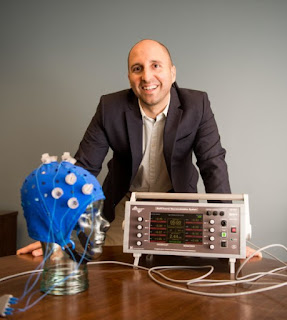Scientists reported that they
have developed a virtual prosthetic voice, a system that decodes the brain’s
vocal intentions and translates them into mostly understandable speech, with no
need to move a muscle, even those in the mouth. The system deciphers the
brain’s motor commands guiding vocal movement during speech (the tap of the
tongue, the narrowing of the lips) and generates intelligible sentences that
approximate a speaker’s natural cadence. Experts said the new work represented
a proof of principle, a preview of what may be possible after further
experimentation and refinement. The system was tested on people who speak
normally but it has not been tested in people whose neurological conditions or
injuries, such as common strokes, could make the decoding difficult or
impossible.
For the new trial, scientists at
the University of California and U.C. Berkeley recruited five patient people
who were in the hospital being evaluated for epilepsy surgery. Each had been
implanted with one or two electrode arrays: stamp-size pads, containing
hundreds of tiny electrodes, that were placed on the surface of the brain. As
each participant recited hundreds of sentences, the electrodes recorded the
firing patterns of neurons in the motor cortex. The researchers associated
those patterns with the subtle movements of the patient’s lips, tongue, larynx
and jaw that occur during natural speech. The team then translated those
movements into spoken sentences. Native English speakers were asked to listen
to the sentences to test the fluency of the virtual voices. As much as 70
percent of what was spoken by the virtual system was intelligible, the study
found.
More information:




